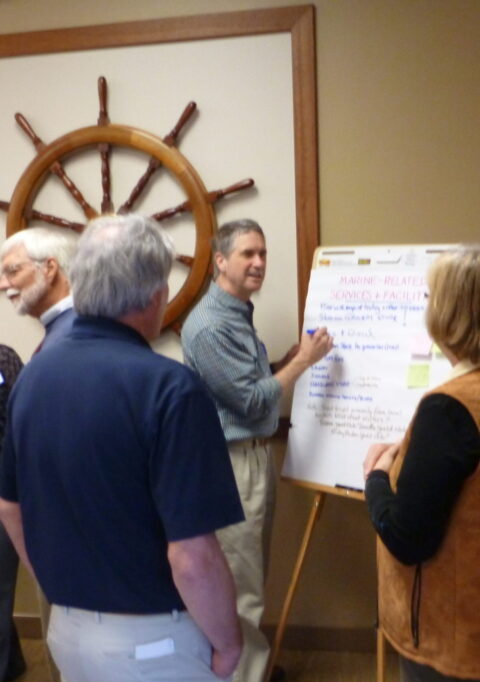Green Roof and Rooftop Solar Cost-Benefit Analysis
Client: Washington Department of Commerce
Case Study
Peak and EES Consulting partnered on a Green Roof and Rooftop Solar Cost-Benefit Analysis project for the Department of Commerce. The objective of this work was to better understand the qualitative and quantitative benefits of such agrivoltaic systems on new commercial buildings in densely-populated areas of Washington over the next 20 years.
This agrivoltaic cost-benefit analysis used a variety of methods to develop assumptions and understand implementation barriers. Costs and benefits used direct modeling, a survey of industry experts and practitioners, and secondary research. Our team leveraged regional contacts and existing cost-benefit analyses. Our research about how green roof programs and rooftop solar programs are configured, funded, and incentivized included national and international examples.
This study also focused the literature review on US sources. If no local studies were available, we relied on adjacent or nearby states, then international locations. For leading examples of approaches to rooftop solar and/or green roof (cool roof) programs, we examined the San Francisco Better Roofs Ordinance, the New York City Administrative Code and Building Code, and the City of Chicago Green Roofs; Solar Express Permit Program.
Agrivoltaic Cost-Benefit Project Outcomes
Our study found that green rooftops paired with agrivoltaics have the potential to solve multiple challenges in areas with high population growth such as Washington State. Most rooftop solar installations pencil out as cost-effective when incentives are included and the energy produced is compared to retail utility rates.
However, our study concluded that rooftop agrivoltaics are not wholly cost-effective in Washington. Regardless, the State may wish to promote agrivoltaics for economic reasons that are difficult to quantify at this time. Our study provided general recommendations should Washington move forward with an agrivoltaic program of this kind.
Key Findings
- Increasing soil depths on green roofs (in Spokane, for instanc) results in not needing irrigation systems due to consistent monthly rainfall.
- Stormwater benefits are dependent on the variable cost of stormwater treatment. Not all areas in Washington State treat stormwater.
- The primary benefit of green roofs is stormwater retention. Energy savings from the added R-value from green roofs minimally impacts new building energy efficiency when the most recent Washington building codes get factored into the analysis.
- The primary quantified benefit of green roofs is the stormwater impact, and this benefit varies widely depending on the local stormwater infrastructure.
- In practice, rooftop agrivoltaic projects are not common. When solar and green roofs are combined on the same roof, they often exist separately. This leaves colocation benefits unrealized.
- Washington has already implemented several programs to promote increased adoption of rooftop solar. These include solar-ready buildings, sales tax rate exemptions, and grant monies for qualifying projects. Additionally, significant incentives are available at the Federal level from the American Recovery and Reinvestment Act.
- The colocation benefits of solar PV and green roofs related to energy production are not significant. The study identified qualitative colocation benefits for green roofs from solar PV shading; however, the data available was insufficient for quantifying those benefits.
We also examined the barriers to implementing agrivoltaic projects. These included the value of incentives for projects and the perceptions of builders and developers, roofers, and landscapers. Additionally, the variability of climate conditions in Washington makes it difficult to establish a best practice for the state. Finally, when combined, the cost of agrivoltaics is as much as twice the cost of the benefits quantified. Adding battery storage to agrivoltaics could realize electric system capacity benefits. However, those benefits do not outweigh the cost of capital for the battery under current economic conditions.
Agrivoltaic Study Impact
Urban planners must balance the trade-off between installing rooftop solar and colocating green roofs or cool roofs. The results of the study provide one of the first detailed analyses of the costs and benefits of agrivoltaic measures. for Washington State. They may provide the basis for potential future legislation or building code amendments addressing green roof and agrivoltaic measures. It’s important to note that agrivoltaics could provide relief for some impacts from hotter and drier summers and increased winter rainfall in Western Washington.














